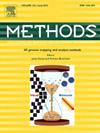IF-CRIB:一种3d打印设备,用于促进免疫荧光实验,并用于筛选和表征表达可降解形式ERK2的细胞。
IF 4.3
3区 生物学
Q1 BIOCHEMICAL RESEARCH METHODS
引用次数: 0
摘要
基于免疫荧光的固定细胞蛋白检测是细胞和发育生物学研究的有力工具。虽然存在各种免疫荧光方案,但它们可能耗时或需要昂贵的设备,而这些设备可能不是所有实验室都能获得的。这些方案的一个共同挑战是大量的洗涤步骤,特别是在许多条件下的实验中。为了解决这个问题,我们在这里介绍IF-CRIB设备,这是一种3d打印洗涤架,专门设计用于涉及大量带有贴壁培养细胞的圆形盖子的应用。我们详细介绍了它的设计和3D打印过程,可以很容易地由任何实验室使用,我们强调,它有利于众多的洗涤步骤。此外,我们提出了IF-Express协议,这是一种优化和有效的方法,可实现快速和一致的免疫荧光结果。作为IF-CRIB设备和IF-Express协议的实用性的一个例子,我们描述了它们在筛选和表征几个NIH3T3细胞克隆中的应用,这些克隆在dTAG-13化合物处理后表达可降解形式的ERK2激酶(ERK2- dtag)。ERK2-dTAG克隆的产生涉及一种敲入策略。我们为ERK2-dTAG的克隆选择、免疫荧光筛选和表征提供了详细的方法,包括降解动力学、剂量反应分析和核易位分析,以评估ERK2-dTAG的功能。IF-CRIB设备和IF-Express协议已被证明是观察和表征表达erk2dtag的克隆的有效方法,从而为研究细胞生物学和疾病模型中的ERK2动力学提供了强大的框架。本文章由计算机程序翻译,如有差异,请以英文原文为准。
IF-CRIB: A 3D-printable device to facilitate immunofluorescence experiments and its application in screening and characterizing cells expressing a degradable form of ERK2
Immunofluorescence-based detection of proteins in fixed cells is a powerful tool for research in cell and developmental biology. While a variety of immunofluorescence protocols exist, they can be time consuming or require expensive equipment which may not be accessible to all laboratories. A common challenge in these protocols is the numerous washing steps, particularly in experiments with numerous conditions. To address this, here we introduce the IF-CRIB device, a 3D-printable wash rack specifically designed for applications involving a high number of round coverslips with adherent cultured cells. We detail its design and the 3D printing process which can be easily used by any laboratory and we highlight that it facilitates the numerous washing steps. In addition, we present the IF-Express protocol, an optimized and effective method that enables fast and consistent immunofluorescence results. As an example of the utility of the IF-CRIB device and the IF-Express protocol, we describe their application in the screening and characterization of several NIH3T3 cell clones expressing a degradable form of ERK2 kinase (ERK2-dTAG) after treatment with the dTAG-13 compound. The generation of ERK2-dTAG clones involves a knock-in strategy. We provide a detailed methodology for clone selection, immunofluorescence screening, and characterization of ERK2-dTAG, including degradation kinetics, dose–response analysis, and nuclear translocation assays to assess ERK2-dTAG functionality. The IF-CRIB device and IF-Express protocol has been proven to be efficient for the obtention and characterization of ERK2dTAG-expressing clones thereby offering a powerful framework for studying ERK2 dynamics in cell biology and disease models.
求助全文
通过发布文献求助,成功后即可免费获取论文全文。
去求助
来源期刊

Methods
生物-生化研究方法
CiteScore
9.80
自引率
2.10%
发文量
222
审稿时长
11.3 weeks
期刊介绍:
Methods focuses on rapidly developing techniques in the experimental biological and medical sciences.
Each topical issue, organized by a guest editor who is an expert in the area covered, consists solely of invited quality articles by specialist authors, many of them reviews. Issues are devoted to specific technical approaches with emphasis on clear detailed descriptions of protocols that allow them to be reproduced easily. The background information provided enables researchers to understand the principles underlying the methods; other helpful sections include comparisons of alternative methods giving the advantages and disadvantages of particular methods, guidance on avoiding potential pitfalls, and suggestions for troubleshooting.
 求助内容:
求助内容: 应助结果提醒方式:
应助结果提醒方式:


